
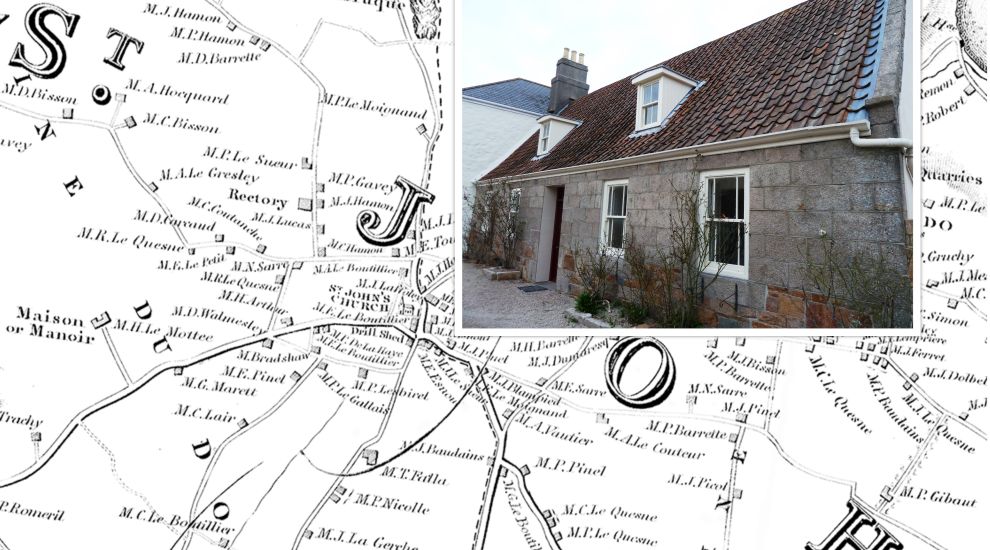

Are you a Perrot, Le Quesne, Powell, Le Maistre or Pinel? If so, you may have relatives in some of the many families who have occupied the 180-year-old Oak Place in St John's village – including Elton John...
‘Your Home, Your Story’ is a series of free talks at Jersey Archive that focuses on individual properties nominated by islanders wanting to know more about their home and the area in which they live.
As part of the next talk at Jersey Archive this weekend, Archivist Roland Quintaine has shared part of his research on Oak Place, which was built over 180 years ago and has changed hands numerous times over the centuries...
Oak Place is a picturesque cottage in an important position opposite St John’s Parish Church and next door to the village corner shop.
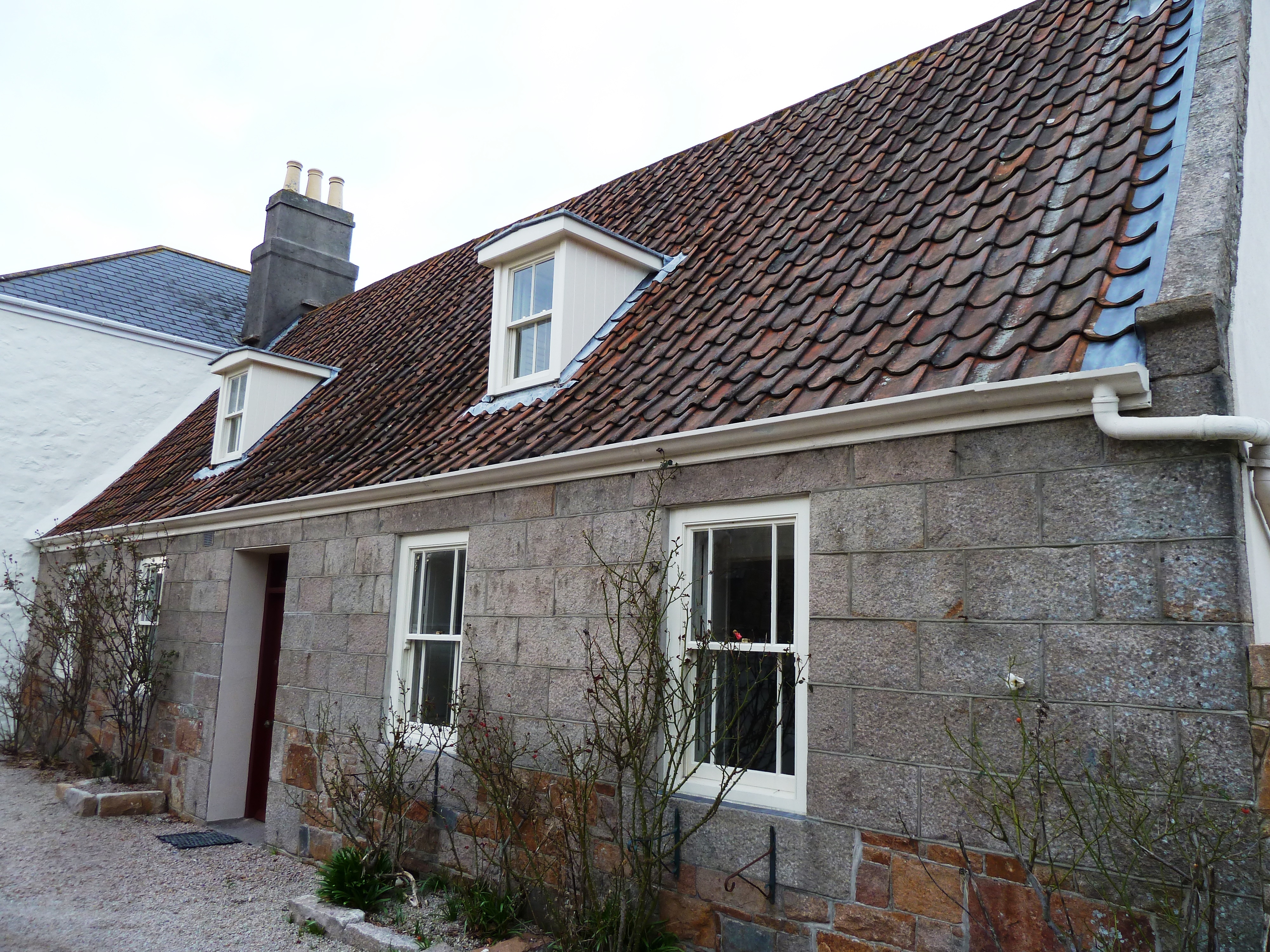
Pictured: Oak Place has been in the heart of St John's village since the mid-1800s.
The purchase history of this property is recorded in the Public Registry and goes from the most recent contract passed in 2022, all the way back to the mid-1800s. Census records also show who was living in the property and give a sense of what the area was like over the years.
At the time of the 1921 census, Oak Place was owned by Francis John Perrot, a blacksmith, who had bought it three years previously. He did not live there at the time; instead, the property was occupied by his widowed mother and six of his siblings.
20 years later, however, Francis’ Occupation Registration card records the cottage as his address. Unusually, this was not updated in 1944 when he sold the property so it’s not clear where he moved to next.
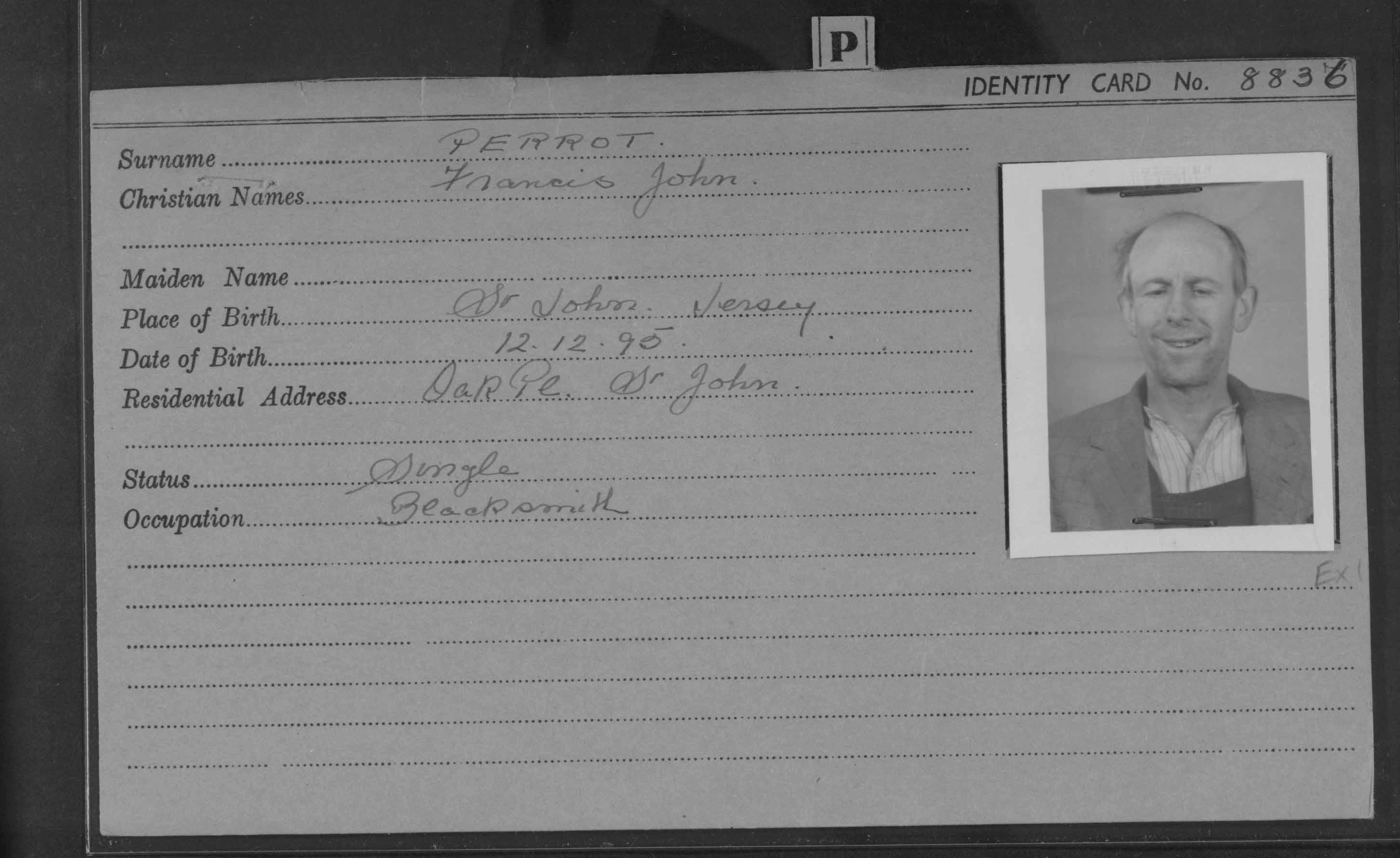
Pictured: The registration card of Francis John Perrot who bought Oak Place in over 100 years ago.
Before Francis purchased the house, it was owned by members of the Le Quesne family.
The 1901 census shows Walter and Susan Le Quesne in residence. They lived there with three children, including the wonderfully named Elton John Le Quesne. Walter’s profession was listed as ‘grocer and shopkeeper’. He was not recorded as working at home, so it’s possible that he was the shopkeeper of the village store located next door.
Walter died in 1903, 10 years after buying the house, at the age of just 41 years old. On 12 October that year, the Evening Post reported that he was working as a carpenter and fell 15 ft from scaffolding on a building site near St John’s Rectory. He later died of his injuries and an inquest returned a verdict of accidental death.
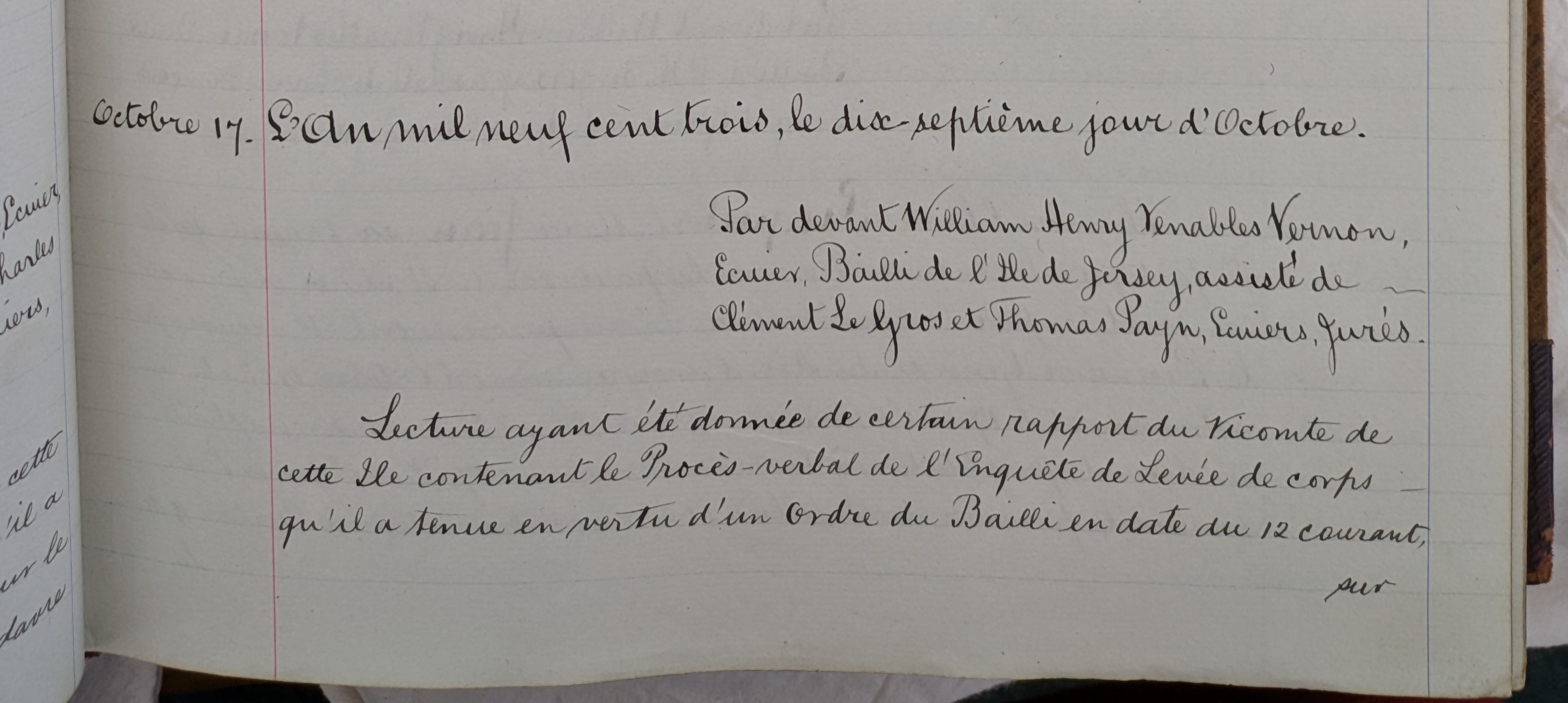
Pictured: The report of the inquest into the death of Walter D Le Quesne.
A couple of years later in 1905, Susan remarried to Edward Powell, a waiter from Hampshire, who had been living in St John.
The ceremony took place in St Saviour’s Parish Church. The 1911 census shows Susan living at Oak Place, where she was listed as the head of the household. Her occupation was recorded as ‘grocery, wine and spirits and telephone exchange’. The same census shows that Edward was in lodgings in St Helier and worked as a commission agent.
There was also a lodger at Oak Place at this time; a Joseph Clelow of Rochester. His occupation was granite quarrier, a very popular profession in St John thanks to the quarry industry that existed for many years at Mont Mado.
Although the house is named ‘Oak Place’ in more recent property contracts, in 1893 and earlier it was just called ‘a certain house’, which is a description that is common in older contracts.
The 1893 contract records the purchase of Oak Place by Walter Le Quesne and Susan Le Maistre from a Philip Pinel, son of Clement, and his wife, Lydia Amy, daughter of Charles.
Lydia had bought the house from Elizabeth Amy, recorded as daughter of Philippe – so the two women were not sisters, although it is possible that they were relatives. Elizabeth had inherited the house from her late husband, Josué Simon. The St John’s Parish Church burial register recorded that Josué died on 14 March 1885, aged 79 years old, of ‘old age’.
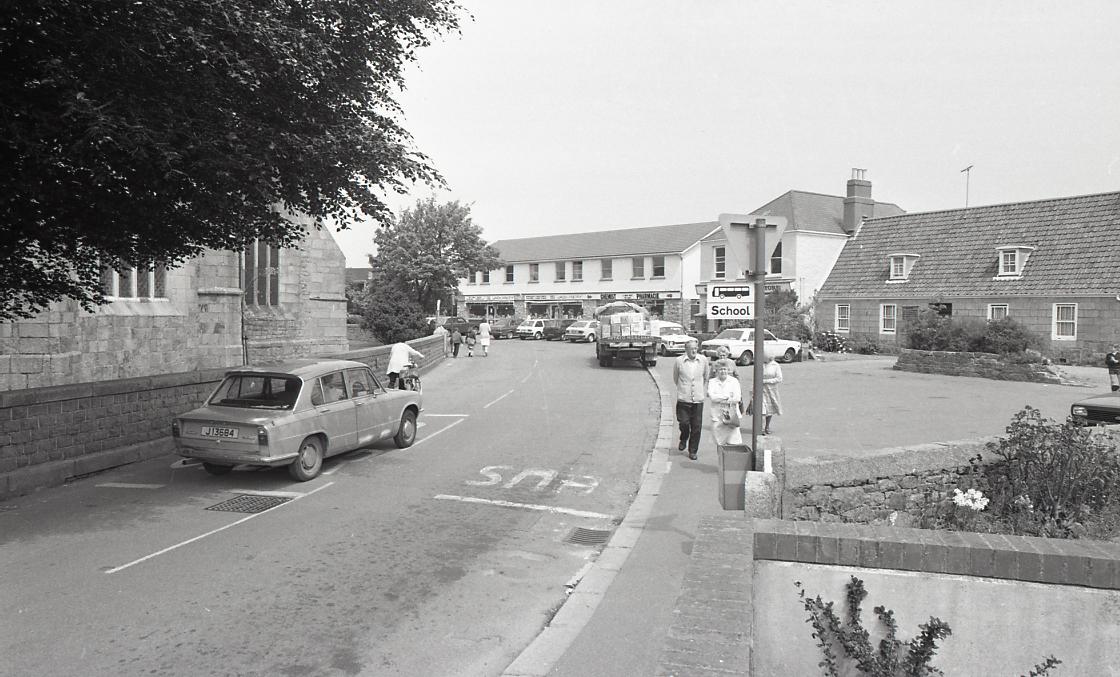
Pictured: Oak Place (right) has been in the centre of St John's Village for almost two centuries here published in a 'Parish Notebook' article in the JEP.
We next find the house on the 1861 and 1871 censuses when it was owned by Charles Payn, a sailor and ship carpenter born in St Martin.
Charles, his wife Nancy, and her mother are present in the house, which was unnamed in 1861 but by 1871 had acquired the name ‘Onesime Cottage’. Onesime is the French name for Onesimus, a biblical character traditionally thought to be an escaped slave who converted to Christianity after hearing the gospel from St Paul.
Charles and Nancy owned the house for just over 10 years. Before this, it was in the hands of sisters Rachel and Elizabeth le Quesne, both of whom were recorded on the 1851 census in an unnamed property in St John’s Village. At that time, both ladies were unmarried, in their 50s and described as ‘annuitants’, meaning they were receiving an income from lands or investments.
In 1849, the Duke of Godfray Map of Jersey was published. Many rural properties in Jersey are marked on this map with the name of the then-owner. A building on the site of Oak Place has the name F Le Quesne attached to it.
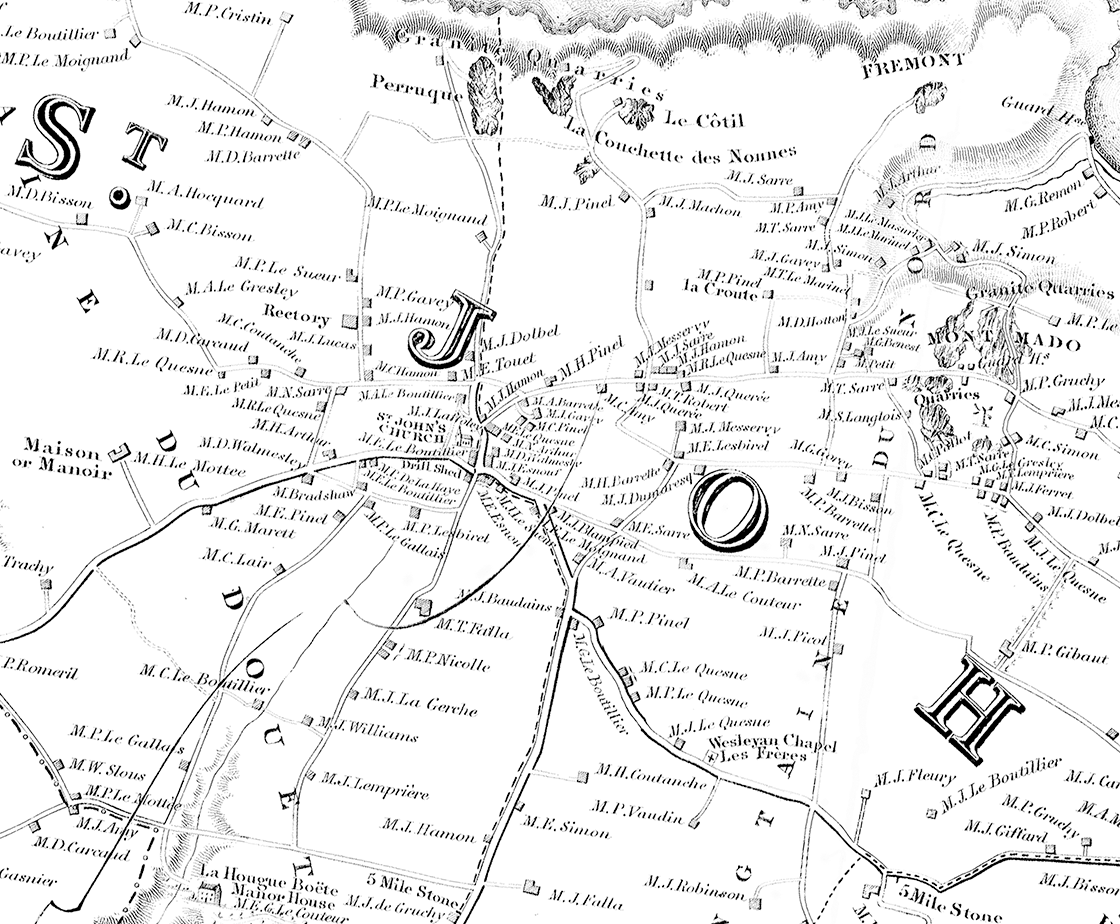
Pictured: The Godfray map of 1849 shows an F Le Quesne as the then-owner of Oak Place.
The Godfray map lists nearly all the house owners with the prefix ‘M’ for Monsieur. This gives the impression that women did not own houses in the Island at that time, but it is evident from the history of this house that this was not always true.
The Le Quesne sisters acquired the house in 1838 from one of the creditors of Josué Le Quesne, possibly a relative of theirs, who had gone bankrupt and forfeited his property. There is no information about previous owners in that contract, so this is where the trail goes cold.
This article only touches on some of the research into ‘Your Home, Your Story’ (YHYS) series, sponsored by Antony Gibb Historic Buildings Consultants. If you would like to hear more stories, Jersey Archive is hosting a free talk this Saturday (17 August). To book a place for the talk, call 833300 or email archives@jerseyheritage.org.
The Archive will also be open from 09:00 to 13:00 for general research.
What's your home's story? How a war hero made his home at First Tower
LOOKING BACK: Mutinous militiamen in camp
What's your home's story? A grocery with several names
What's your home's story? The house behind St. Ouen's first contested election
Comments
Comments on this story express the views of the commentator only, not Bailiwick Publishing. We are unable to guarantee the accuracy of any of those comments.